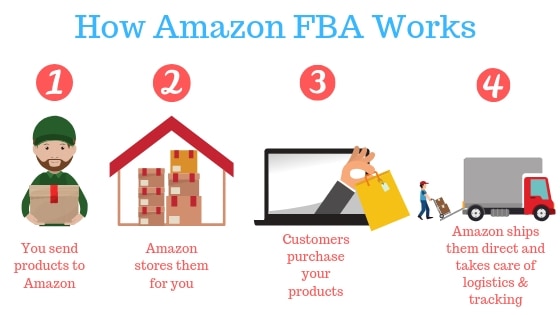Amazon FBA (Fulfillment by Amazon) stands for Fulfillment by Amazon, an online business approach that allows individuals and companies to send their products to Amazon warehouses, stored, packed, and shipped to customers. If you plan to open an online e-commerce business or look for other ways to sell your products, setting up an Amazon FBA business may be the right choice. However, it’s essential to choose a suitable model before venturing into this type of business. In this article, we will share some valuable tips on doing that.

My Journey From Online Marketing to Amazon FBA
Amazon FBA stands for Amazon Fulfilled by Amazon. A business model in which a merchant ships their products to an Amazon warehouse and then Amazon fulfills customer orders from that rocket pkg warehouse. This process allows you to get massive scale at a relatively low cost. When I started online, I sold information products using a simple affiliate marketing model. It didn’t take long before I realized just how powerful Amazon’s platform could be, so I began investigating my options. When it comes to arbitrage and dropshipping, most experts will tell you those strategies aren’t worth pursuing, but they won’t tell you that there are other ways of getting into Amazon that doesn’t take tens of thousands of dollars in investment years to master.
You may also like Digital Assets & Estate Planning: What You Need To Know
How to Start Amazon FBA Business
Amazon FBA business is an abbreviation for Amazon Fulfillment Amazon. You can put your items on sale and ship them to Amazon in bulk as a merchant. They then store them in their warehouses and ship them out to customers. In most cases, Amazon will ship orders directly to your customers from its warehouses (FBA), so they’re shipped quickly and efficiently. All you have to do is send one shipment of products to Amazon’s warehouse – after that, everything else happens behind the scenes! That means there’s no need for expensive shipping services or selling online software that leaves you constantly updating orders.
My Favorite Product Research Tool for Amazon
I started selling on Amazon with only one goal in mind: making money. I was doing just that, but it took a lot of work. After a while, I decided to see if it was possible to sell on Amazon without dealing with shipping products myself (Amazon’s fulfillment by Amazon or FBA program). It turns out that setting up an FBA business takes some tools, tools that helped me organize my inventory, customers, and sales even as my product catalog grew. Here are three that made a big difference.
Essential Apps for Amazon Sellers
Amazon Marketplace sellers like us need to know some practical ways to keep track of all our sales, expenses, inventory, and other details. To help us, Amazon has launched an official marketplace app for our smartphones. Let’s see in detail what it can do for you. For example, as a seller on Amazon, you get notifications about any fees or refunds related to your transactions. You can quickly respond to reviews left by your customers, too, without much effort! One cool thing about Amazon Seller App is that it gives information about your product performance, including if there is greater than 5 of a particular item selling or only one selling item with many search results, so we need not worry about that product performing well or not. It helps us calculate profit margins quickly using a quick formula when we were unsure how much we should charge per unit on average!
You may also like Strategy of Startup Business
Monthly Expenses For A Growing Amazon Seller
Now, the Amazon FBA business has a few moving parts. In addition to running your online store expenses, you also have warehousing and shipping costs and selling expenses, like digital advertising, print ads, and more. To learn more about the monthly expenses of an Amazon seller, check out our in-depth breakdown of what it costs to run an Amazon business here. You’ll also find specific details on how much each area will cost you in our All About Expenses section.
Financials of Running an Amazon Business
The highest overhead cost to running an Amazon business is shipping. If you’re selling on your website, you may be able to negotiate a better rate with FedEx or USPS, but if you decide to sell on Amazon, it will most likely come out of your pocket. The second biggest expense for those who sell products directly through their websites is inventory costs. You need to buy stock to fill orders that come in, and for many businesses, it can be hard to keep up with demand without paying more than market value for goods. However, if you choose to run an Amazon business (or any business that deals with third-party sales), neither of these expenses apply.
Is An Amazon Business Worth It?
If you’re thinking about getting into an Amazon business, there are a few things you should consider. First, what exactly do you want out of your business? How much time and effort can you invest in it every week or month? Do you have any special talents that could make your business unique and viable right off the bat, as opposed to years down the road? If so, that might be worth something to a prospective buyer. If not, don’t feel bad; it just means more work for you. If you want to go through with setting up an Amazon business, make sure your expertise makes sense for selling on a platform like Amazon.
You may also like Ways to Work Smarter in a Temporary Office
Would you like to read more about Amazon FBA Business-related articles? If so, we invite you to take a look at our other tech topics before you leave!
![]()











